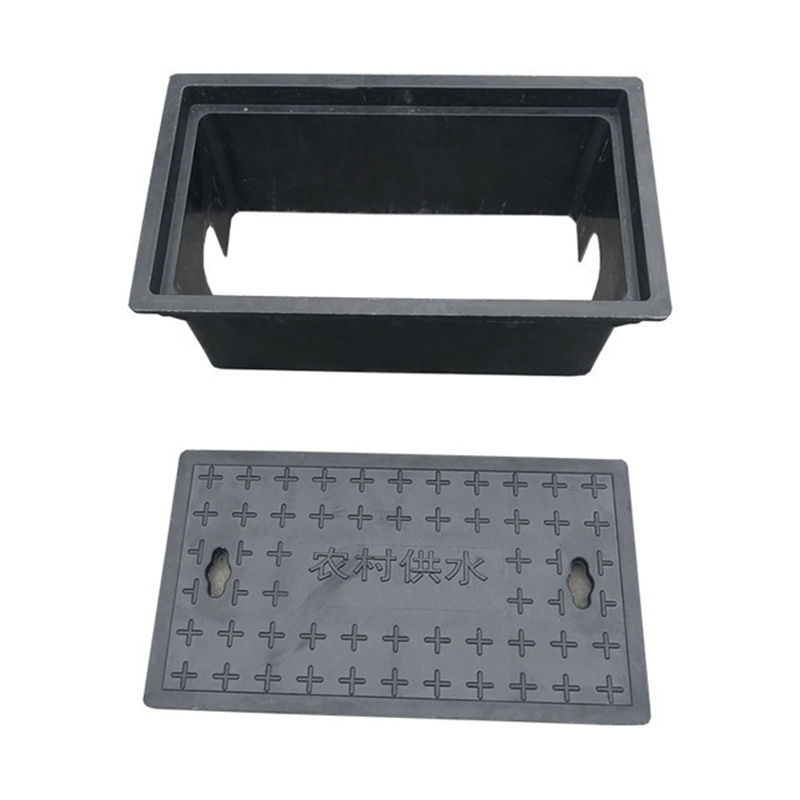V-Shaped HDPE Building Materials Pipe Plastic Drainage Ditch
Cat: Plastic Drain Channel
The V-shaped HDPE building material pipeline plastic drainage trench represents a significant innovation in drainage technology, tailored to meet...
See DetailsIn modern utility management, protecting essential equipment from environmental and physical hazards is a critical priority. One of the key components used to safeguard water metering devices is the Plastic Water Meter Box. Known for its reliable structure and adaptable design, the Plastic Water Meter Box plays an important role in maintaining the performance and accuracy of water meters in a variety of locations, from residential neighborhoods to industrial facilities.

The Plastic Water Meter Box is specifically engineered to shield water meters from external factors such as dirt, debris, and fluctuating weather conditions. By enclosing the meter within a durable housing, the Water Meter Box helps prevent exposure to rain, snow, and sunlight, which can otherwise result in wear and potential malfunction. The material properties of the Water Meter Box make it resistant to corrosion and moisture, allowing it to perform well in both wet and dry environments.
Another advantage of the Plastic Water Meter Box lies in its ability to protect meters from accidental physical damage. Whether installed in a high-traffic pedestrian area, along a roadside, or within a garden space, meters face risks of being struck by tools, vehicles, or heavy objects. The sturdy walls of the Water Meter Box act as a barrier, reducing the chance of breakage and extending the service life of the water meter inside.
Tampering and unauthorized access are additional concerns in utility services. The Plastic Water Meter Box typically comes equipped with a secure lid and locking mechanism, helping utility providers control access to the equipment. This reduces the risk of intentional damage or meter manipulation, ensuring consistent and accurate readings for billing and monitoring purposes. The Water Meter Box design often includes identification markings or labels, making it easy for technicians to locate and access meters for inspection and maintenance while still maintaining security.
The Plastic Water Meter Box also contributes to organized utility infrastructure. By providing a designated enclosure for each meter, it ensures neat and standardized installation in housing developments, commercial properties, and public spaces. The uniform size and shape of the Water Meter Box simplify the layout of underground or surface meter systems, improving efficiency during installation and servicing.
In areas where environmental protection regulations apply, the Plastic Water Meter Box serves as a valuable solution by helping to prevent contaminants like soil, oils, or waste materials from coming into contact with the water meter. This not only preserves meter functionality but also reduces the likelihood of localized environmental issues caused by damaged or exposed utility components.
Utility providers often choose the Plastic Water Meter Box for its cost-effective combination of durability and lightweight construction. Compared to metal alternatives, the Water Meter Box is easier to transport and install, lowering labor costs and reducing the need for specialized lifting equipment. This makes it a practical option for projects involving multiple installations in residential developments or municipal upgrades.
Another feature of the Plastic Water Meter Box is its compatibility with various types of meters and piping systems. Available in different sizes and configurations, the Water Meter Box can accommodate meters for homes, businesses, and irrigation systems, offering flexibility for diverse utility service demands.
Seasonal temperature changes pose challenges to outdoor equipment, and the Plastic Water Meter Box helps manage this issue by providing insulation from direct heat and cold. While it does not completely eliminate temperature effects, the protective casing of the Water Meter Box can lessen rapid temperature fluctuations that might otherwise impact the meter’s mechanical or electronic components.
In regions prone to flooding or heavy rainfall, the Plastic Water Meter Box helps prevent water ingress and sediment buildup around meters. Many designs incorporate drainage features or raised bases, allowing water to flow away and reducing standing water within the enclosure. This reduces the risk of corrosion or meter malfunction due to water exposure.
It would be great to hear from you!